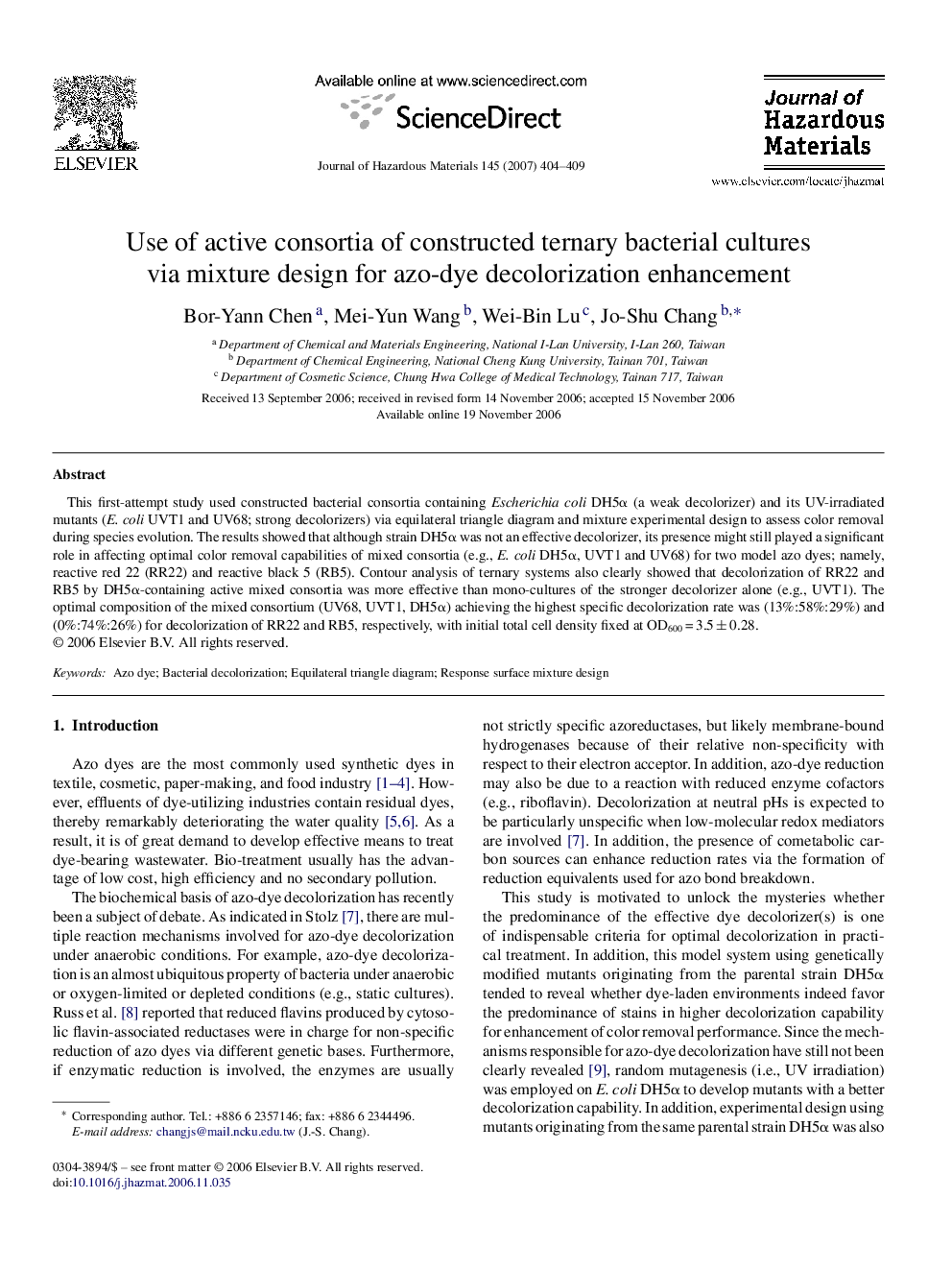| Article ID | Journal | Published Year | Pages | File Type |
|---|---|---|---|---|
| 584319 | Journal of Hazardous Materials | 2007 | 6 Pages |
Abstract
This first-attempt study used constructed bacterial consortia containing Escherichia coli DH5α (a weak decolorizer) and its UV-irradiated mutants (E. coli UVT1 and UV68; strong decolorizers) via equilateral triangle diagram and mixture experimental design to assess color removal during species evolution. The results showed that although strain DH5α was not an effective decolorizer, its presence might still played a significant role in affecting optimal color removal capabilities of mixed consortia (e.g., E. coli DH5α, UVT1 and UV68) for two model azo dyes; namely, reactive red 22 (RR22) and reactive black 5 (RB5). Contour analysis of ternary systems also clearly showed that decolorization of RR22 and RB5 by DH5α-containing active mixed consortia was more effective than mono-cultures of the stronger decolorizer alone (e.g., UVT1). The optimal composition of the mixed consortium (UV68, UVT1, DH5α) achieving the highest specific decolorization rate was (13%:58%:29%) and (0%:74%:26%) for decolorization of RR22 and RB5, respectively, with initial total cell density fixed at OD600 = 3.5 ± 0.28.
Keywords
Related Topics
Physical Sciences and Engineering
Chemical Engineering
Chemical Health and Safety
Authors
Bor-Yann Chen, Mei-Yun Wang, Wei-Bin Lu, Jo-Shu Chang,
